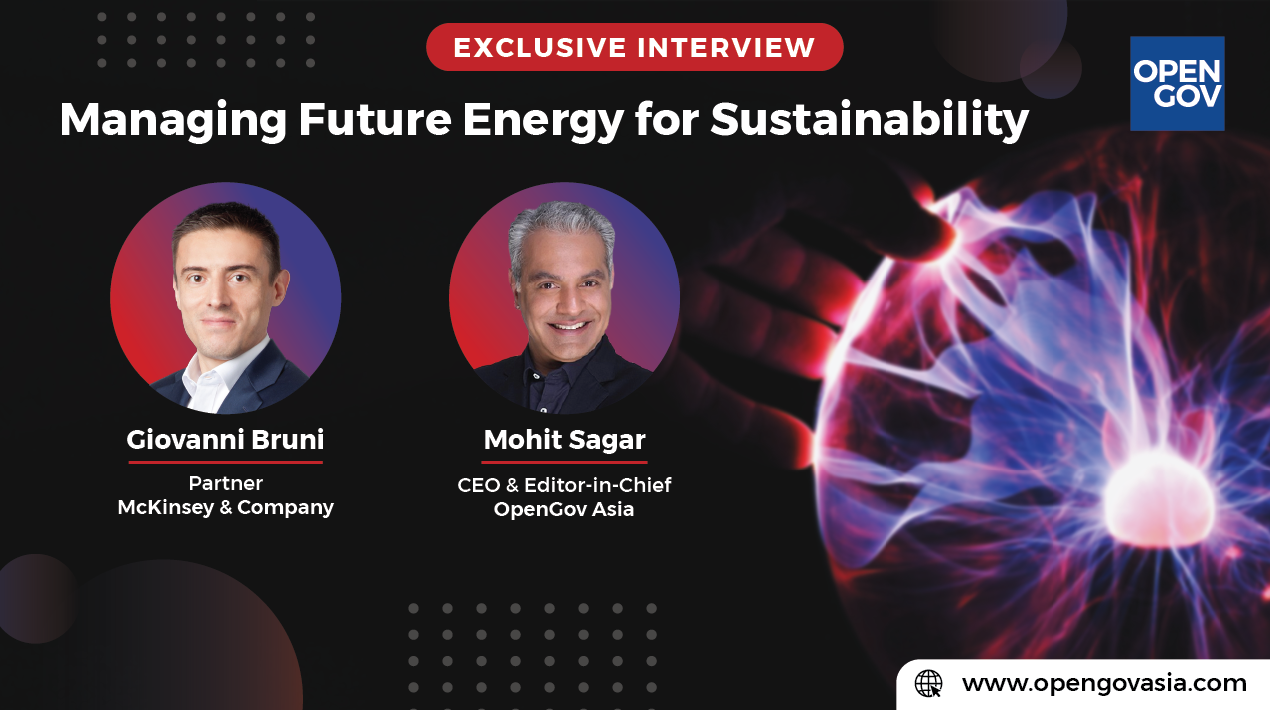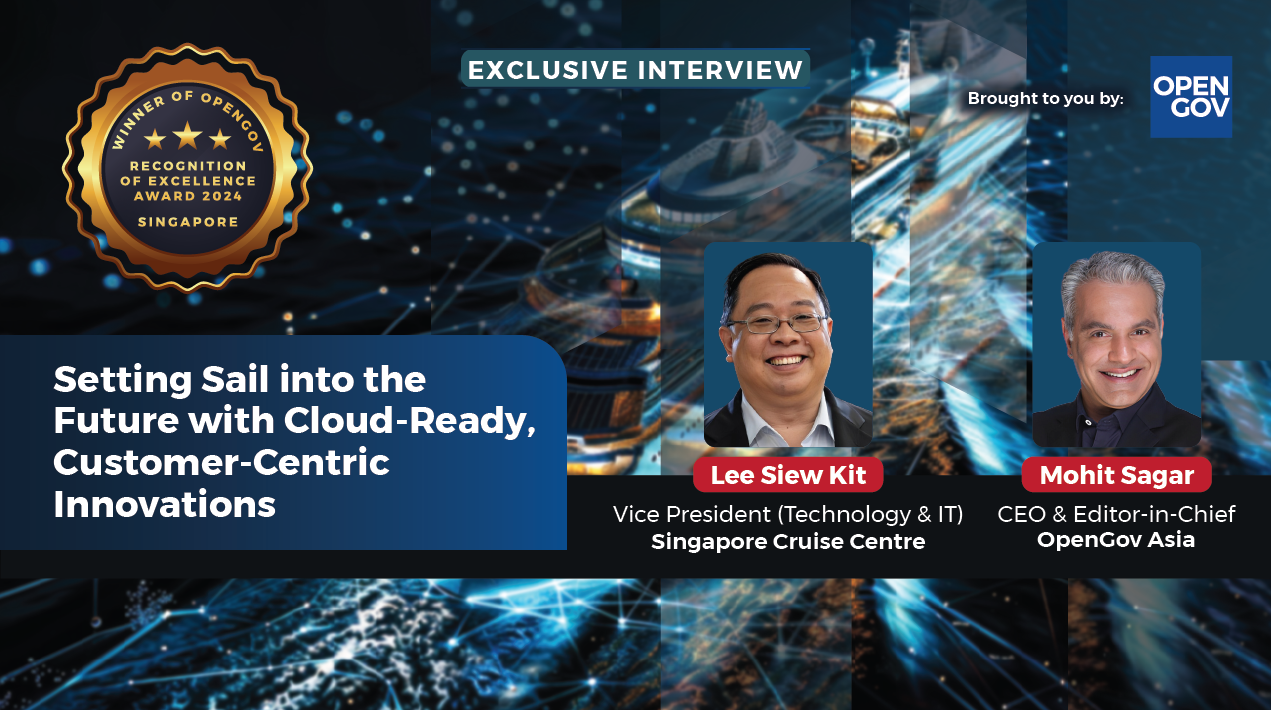
Sustainability is built on the vision that everyone can meet their basic requirements without jeopardising future generations. Energy sustainability adheres to the same goals. Fossil fuels such as coal, natural gas and oil are not only harmful to the environment when consumed for energy, but they are also unsustainable as they are finite resources.
But renewable and sustainable energy is the solution to these energy problems. Specifically, sustainable energy poses a lower environmental risk and contributes little to climate change. However, it is costly. While the energy sources themselves are usually accessible, there are costs connected to developing and constructing methods of capturing sustainable energy.
Against this backdrop, tech-enabled sustainability solutions have emerged as critical weapons in the fight against climate change and other social, environmental and economic issues.
Mixing the sources
 An expert in the energy sector, Giovanni Bruni, Partner, McKinsey & Company, shares his keen insights in an interview with Mohit Sagar, CEO and Editor-in-Chief OpenGov Asia. “The way I look at it, sustainable energy is something that has no or limited adverse effects on the environment, but there is also broader thinking on top of emissions: for example, the impact on habitats, the impact on water,” he explains.
An expert in the energy sector, Giovanni Bruni, Partner, McKinsey & Company, shares his keen insights in an interview with Mohit Sagar, CEO and Editor-in-Chief OpenGov Asia. “The way I look at it, sustainable energy is something that has no or limited adverse effects on the environment, but there is also broader thinking on top of emissions: for example, the impact on habitats, the impact on water,” he explains.
He also notes the subtle difference between sustainable and renewable energy – the latter could regenerate itself instead of depleting. However, it still can adversely affect the environment and other areas.
Giovanni also acknowledges the importance of diverse energy sources when developing more sustainable energy systems in the future and that there is no absolute best mix of energy sources. “A fixed energy mix is unlikely. It’s always dependent on a given country’s dominant energy resources or location.”
Some areas may have a surplus in a particular resource but need more of others. For example, a windier area would have a good wind endowment, while another part with high sun availability might not get as much wind.
Mixing resources, ensuring grid interconnections, or developing energy storage capacity becomes vital when examining alternative energy. Renewables can be intermittent: the windier area should not rely on only windmills alone because sometimes there are conditions when the wind is not as good as usual to generate sufficient electricity.
“It was two years ago when there was a windless summer in Europe. So you don’t want to rely too much on one sort of the same resources. You want to have a mix; don’t put all your eggs in one basket,” he says.
Driving sustainability
Giovanni thinks it is a chicken and egg problem when it comes to pushing for the adoption of sustainable energy, which can be solved by collaboration between the industry and government. The private sector can drive initiatives while the government can support them with policies that allow industries to take decisions and embrace more risk.
“Usually, it is difficult for the government to drive it unilaterally. But policy can give more advanced visibility and help by creating these initial use cases, and maybe giving incentives could allow businesses to think forward. That’s one aspect which I think is important,” he elaborates.
Giovanni observes that many more sustainable energy commitments have emerged in the region and believes a majority of countries in Southeast Asia have moved toward a more sustainable perspective. This is signalled by shorter-term emission reduction targets, incentives, green business building and encouraging EV adoption.
New value chains and new economic opportunities could be the baseline to see decarbonisation as an opportunity to grow. It can be a way to leapfrog the economy and create new competencies.
Regarding which industry would be a priority to utilise sustainable energy, Giovanni feels that at this point, there is no way to pick a single choice. But among the sectors, power, transport, industry, agriculture and forestry make significant contributions, and each requires bespoke solutions.
“All these four big buckets have unique challenges; we need to find solutions and resolutions that look different, right?”
For example, instead of relying only on conventional fuels and renewables in the power sector, they can be coupled with some sources like hydrogen, which can be stored and provide ways to deal with intermittency.
And some industries, such as cement, face structural hurdles to reducing their carbon footprint. A possible solution is dealing with carbon by storing or reusing it.
LKYGBPC for sustainable energy
Giovanni has seen how the Lee Kuan Yew Global Business Plan Competition (LKYGBPC) has progressed since its launch a few years ago. At that time, the competition was based more on technology applied in a consumer sense. He appreciates that now LKYGBPC includes the energy transition and sustainability sector in the competition.
“These types of competitions allow a broader set of people to engage. That’s the value, to have an impact and influence.”
He adds that embarking on these competitions can also help entice the new generation to adopt new technologies and practices.
“It helps educate in terms of understanding how your choices link to outcomes because oftentimes we don’t have that transparency,” he says. “Do I choose to walk, or do I take public transport? One thing that is very important is getting exposure to the actual reality on the ground.”
“What is really moving the needle? What are the practical hurdles that are happening? So that we can have a slightly more intimate understanding of what is happening. These are complex systems, especially when we talk about energy in the economy,” he adds.
Creating an experience is a profound way to present innovation to the youth, and Giovanni is optimistic that youth can take away much from such competitions.
Ultimately, he feels that through business competitions, youths have the potential to take that experience and bring it into their lives, their work, and whatever areas they want to have an impact and influence – even in the field of sustainable energy.
















